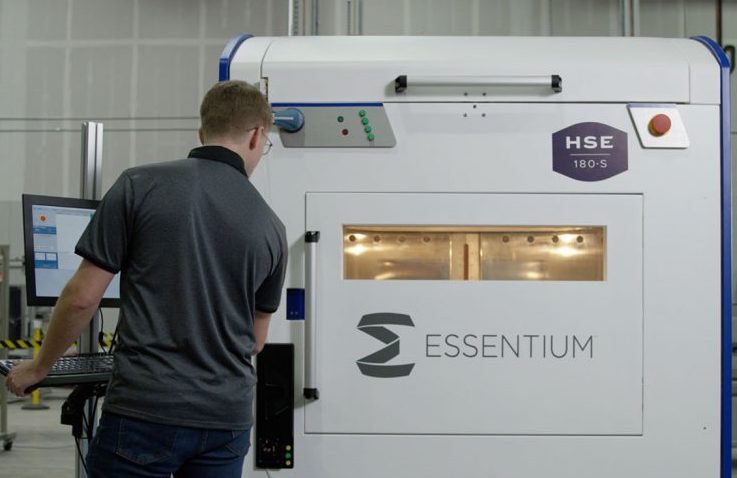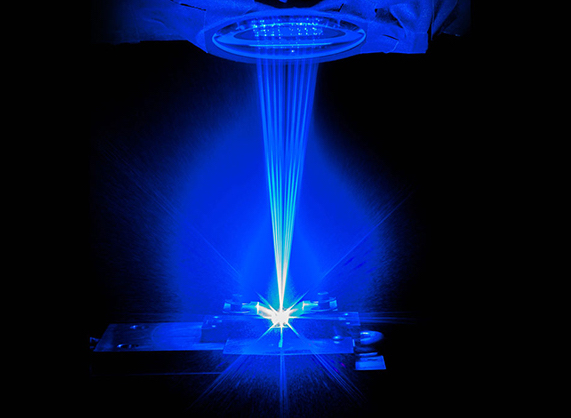The 3D Printing Industry Awards 2022 shortlists are now available for voting. Who will win the 2022 3DPI Awards? Have your say by casting your vote now.
Industrial 3D printer OEM Essentium has released the results of its latest survey of the additive manufacturing sector at the Formnext trade show.
As well as finding that the technology is proving more reliable and increasingly allowing users to gain a competitive advantage, the research uncovered some of the core benefits that drove contributors’ 3D printing adoption. Of those surveyed, 43% praised 3D printing’s ability to accelerate their product’s time to market, while issues like print speed, cost and part performance also cropped up in the results.

High Speed Extrusion Technology
Essentium’s business to date has largely revolved around its proprietary High Speed Extrusion (HSE) technology. Designed to help overcome the cost, durability, and speed constraints preventing 3D printing at scale, the firm’s process has now been brought to market in the form of the HSE 240 HT, HSE 180 and HSE 280i HT systems.
With a build volume of 695 x 500 x 600 mm, the latter is the largest in Essentium’s range. The machine is marketed as the first 3D printer with ‘true independent dual extruders’ (IDEX), as each head is fully independent on both the X and Y-axis. Thanks to its non-slip, high-torque extrusion system and all-linear servo motors, the HSE 280i HT is also said to effectively facilitate printing with precision at pace.
Earlier this year, however, it was revealed that the company is changing direction somewhat, with an Essentium blue laser 3D printer reportedly in the works. Having licensed Nuburu’s blue laser technology, the firm is now developing a Directed Energy Deposition (DED) system, capable of addressing the demanding automotive, aerospace, and defense sectors.

Essentium’s fifth annual AM report
Though Essentium hasn’t published the results of its fifth annual survey in full, it has released excerpts that provide an interesting insight into the current state of affairs in 3D printing. Essentium’s headline figures showed that the use of large-scale additive manufacturing has more than doubled for 81% of those interviewed over the last year, while 88% said they’ve now turned to hybrid manufacturing.
“When it comes to additive manufacturing, the narrative has often focused on pitching additive against traditional manufacturing,” said Blake Teipel, CEO of Essentium. “This survey supports our vision of incorporating AM into the factory floor, enabling manufacturers of all sizes to compete in the global marketplace with next-gen technology. Hybrid represents the future of manufacturing, and to maintain competitive advantage, manufacturers need to jump in now to get ahead.”
In terms of performance, 96% of respondents said that 3D printing is ‘dramatically more reliable’ than five years ago, with 57% saying it has provided them with a competitive advantage in their markets. Results also showed that 74% believed the technology had progressed from prototyping into tooling and manufacturing aid production, and 44% have begun deploying it within full production runs.

While reducing products’ time to market was found to be the main driver for manufacturers’ 3D printing adoption, 37% also cited improved part performance as a key factor. Other reasons that cropped up in the results included the potential cost savings unlocked by the technology, and the desire to in-source in order to avoid supply chain issues.
More broadly, 89% of respondents said they expected large-scale 3D printing to grow across the industry over the next five years, but 32% of executives interviewed agreed that material innovation will be needed for this to happen.
According to Essentium, it’s working to address such issues by collaborating with partners like the US Air Force to certify that its materials allow for uniform, repeatable and reliable part production. The firm’s High Speed Extrusion (HSE) technology is also open-material, broadening users’ pool of accessible feedstocks, while it continues to work towards improving its agility and cost-per-part.

Although Essentium has emphasized the independent nature of the research carried out for its latest report, the study was no doubt commissioned to show how the market is growing for its technologies. That said, it’s far from the only 3D printing manufacturer to take this approach. Last year, for instance, Protolabs’ Decision Time survey found a growing appetite for on-demand production in oil and gas.
Elsewhere in the industry, Wohlers Associates commissions its own study into 3D printing trends every year. The 2022 Wohlers Report found additive manufacturing to be benefiting from the winding down of COVID-19 restrictions, with the sector growing 19.5% in 2021, up significantly on the 7.5% growth achieved in 2020.
Check out our full Formnext news round-up for the latest from 3D printing’s leading trade show.
To stay up to date with the latest 3D printing news, don’t forget to subscribe to the 3D Printing Industry newsletter or follow us on Twitter or liking our page on Facebook.
While you’re here, why not subscribe to our Youtube channel? featuring discussion, debriefs, video shorts and webinar replays.
Are you looking for a job in the additive manufacturing industry? Visit 3D Printing Jobs for a selection of roles in the industry.
Featured image shows Essentium’s HSE 180-S 3D printer. Photo via Essentium.



